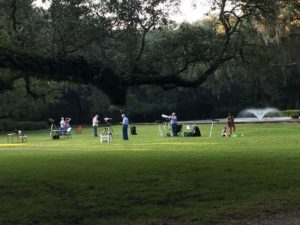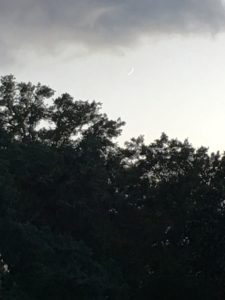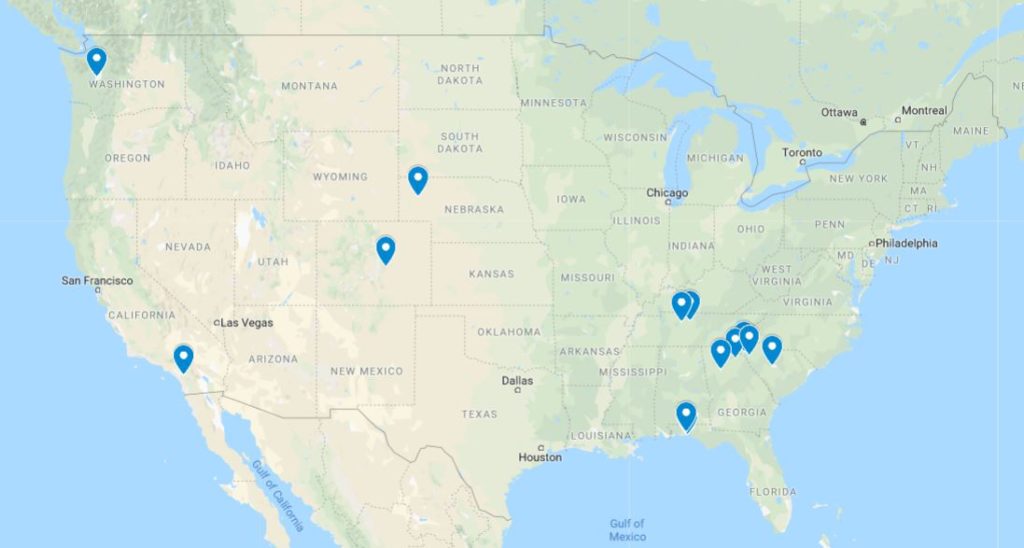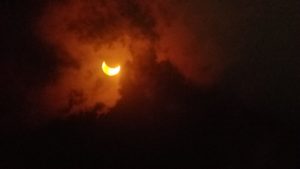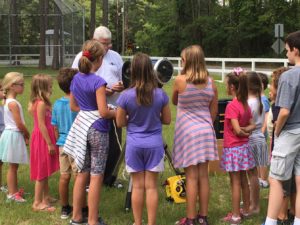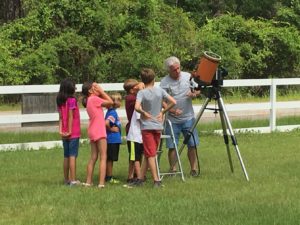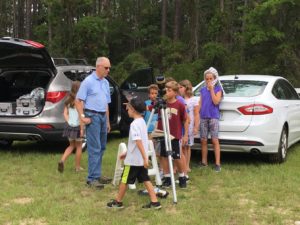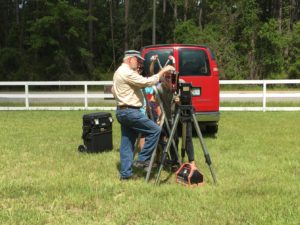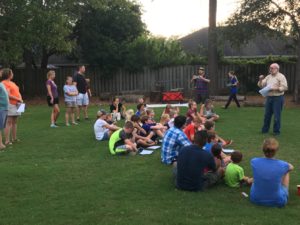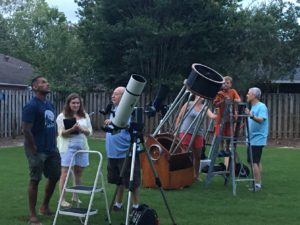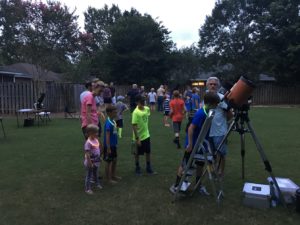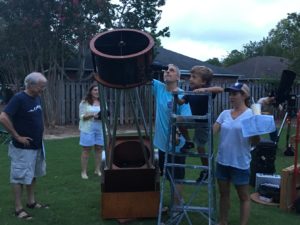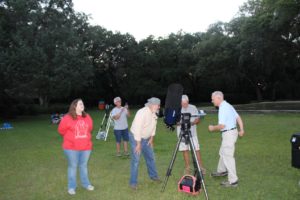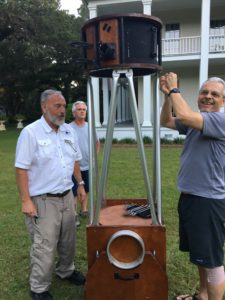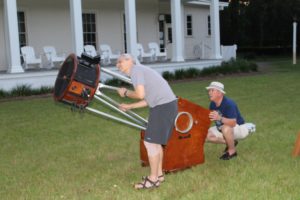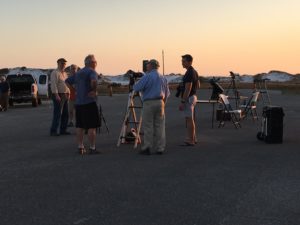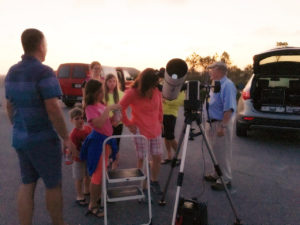This event at Henderson Beach state park was not like any of our past events here. As we arrived an hour before our published start time, there was already a long line of ‘guest observers’ waiting. Even before we arrived park staff had setup a comfort stand to hand out water to those that would need it, so we took advantage of their help and gave them the eclipse glasses that we brought for the guests.
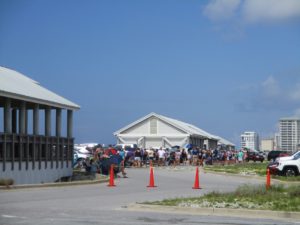 Guest observers waiting for 11:00 AM |
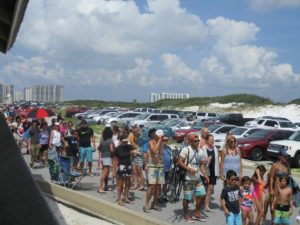 Finally, the line starts to move. |
Meanwhile we started setting up the solar equipment. Dean Covey and Tom Haugh each set up two telescopes; one white light filtered and one H-alpha. Robert Forrester brought his white light filtered Maksutov for his first public star gaze with the NWFAA. He also setup a static display with information and handouts about the eclipse and the Sun. His help was greatly appreciated.
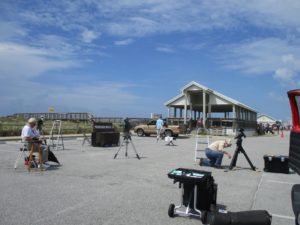 Tom checks the 3rd mount’s compass heading. |
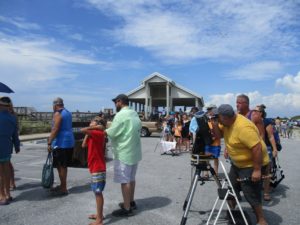 Guest observers getting a ‘before’ view of the Sun. |
As we finished setting up those scopes, the clock chimed 11:00 and the crowd started to gather at each of the scopes. Lines formed and we were busy from then until well past maximum eclipse. If fact, we were so busy that Tom did not have the chance to finish setting up his third telescope. Unfortunately, that was the scope with the piggyback camera to record the eclipse, so he was not able to get any photos. Dean wasn’t able to get any either while he manned his two scopes.
 Eclipse underway. |
 Watching the observers watching the eclipse. |
The rarity of the event led to great coverage by our local media. The Northwest Florida Daily News and Channel 13 out of Panama City sent teams to cover the eclipse.
 Northwest Florida Daily News live streams a report. Note the un-scoped mount in the background. |
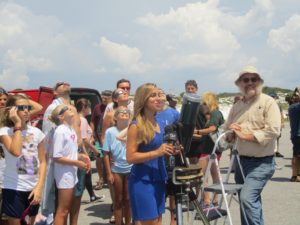 Channel 13 live from Henderson Beach. |
Although none of the NWFAA members got the chance to get any photos of the eclipse, one of our guests did. He was kind enough to send us some that were taken through the eclipse glasses that were handed out at the beginning of the event.
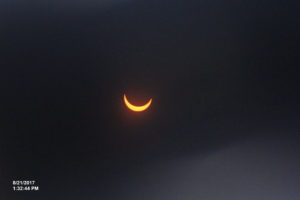 Near maximum obscuration. |
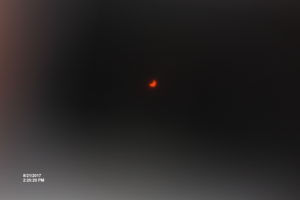 Past maximum. |
The park ranger’s first estimate of attendance was 1,400 and with the uninterrupted flow of observers, we believe them. The weather started out with some high hazy clouds, but well before first contact the skies overhead were clear. Luckily, the ominous clouds to the north stayed away until well after last contact and most of the crowd had left. But ultimately, the skies darkened, the wind picked up and we scrambled to get packed before the rain started. Thankfully, it didn’t.
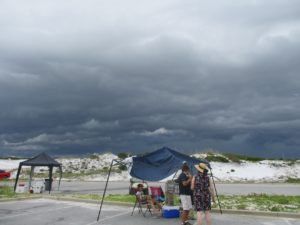 Hurry! |
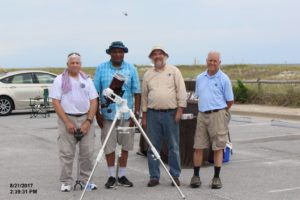 Frank, Robert, Tom and Dean (L-R) |
We would like to thank the Henderson Beach rangers for their support of our event. We also need to thank Donna Haugh for her support and photography. And finally, we need to thank guest observer Artis Coleman for his pictures of the eclipse and of the crowd. Thank you all.
